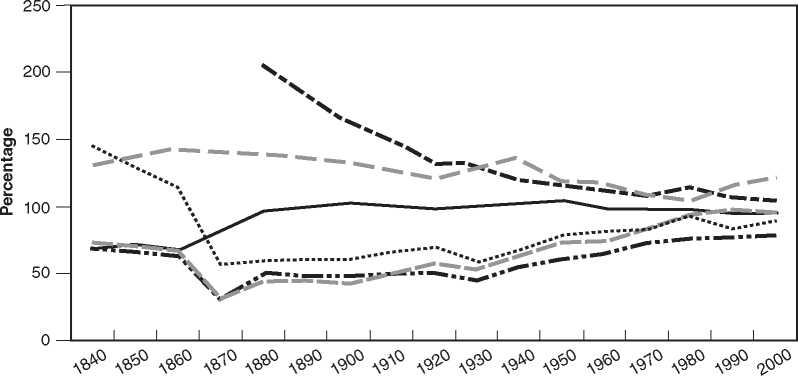Figure 30.2 shows regional incomes in the United States from 1840 until today. It summarizes in a single picture much of the story laid out in previous chapters. At the earliest date, the West South Central (which includes Louisiana) had the highest per capita income. Of course, high average per capita income was consistent with huge disparities among indi-viduals—there were rich planters and impoverished slaves. Average income in that region then fell drastically as a result of the Civil War and began a long slow process of catching up with the rest of the country, a process that has still not been completed. The earliest observation for the Pacific region shows it having an income twice the national average. The natural resources of the Pacific region help explain these high entry-level incomes.
Over the long run, however, as shown in Figure 30.2, per capita incomes in different regions of the United States have gradually converged. Convergence has been brought about mainly by market forces, although government policies that redistributed resources from one region to another played a role. Labor has migrated from labor-abundant
FIGURE 30.2
Convergence of per Capita Incomes in the United States

Source: Easterlin 1971, 40; Statistical Abstract of the United States 2002 and previous editions.
Regions such as the South to labor-poor regions such as the Pacific Coast, raising the growth rate of per capita income in the labor-exporting regions and lowering the growth rate of per capita income in the labor-importing regions. The advice of Horace Greeley, a famous nineteenth-century newspaperman and politician, to “Go West Young Man, and Grow up with the Country,” made good economic sense and was followed by millions of Americans. Similarly, capital migrated from capital-rich regions such as the Northeast to capital-poor regions such as the South, lowering the growth rate of per capita income in the capital-exporting regions and raising the growth rate of per capita income in the capital-importing regions.
Government policies contributed to regional convergence. Since the New Deal, government transfer programs, such as Social Security, and agricultural price supports have shifted incomes from high-income to low-income states. Perhaps the most important government policy was what it did not allow: individual states to impose barriers to trade. The United States was a free trade area: A business that could make a product at a favorable cost was free to sell it anywhere in the country that it chose. As railroads and other means of transport lowered the costs of transportation, interregional “product competition” contributed to the convergence of regional incomes.




 World History
World History









